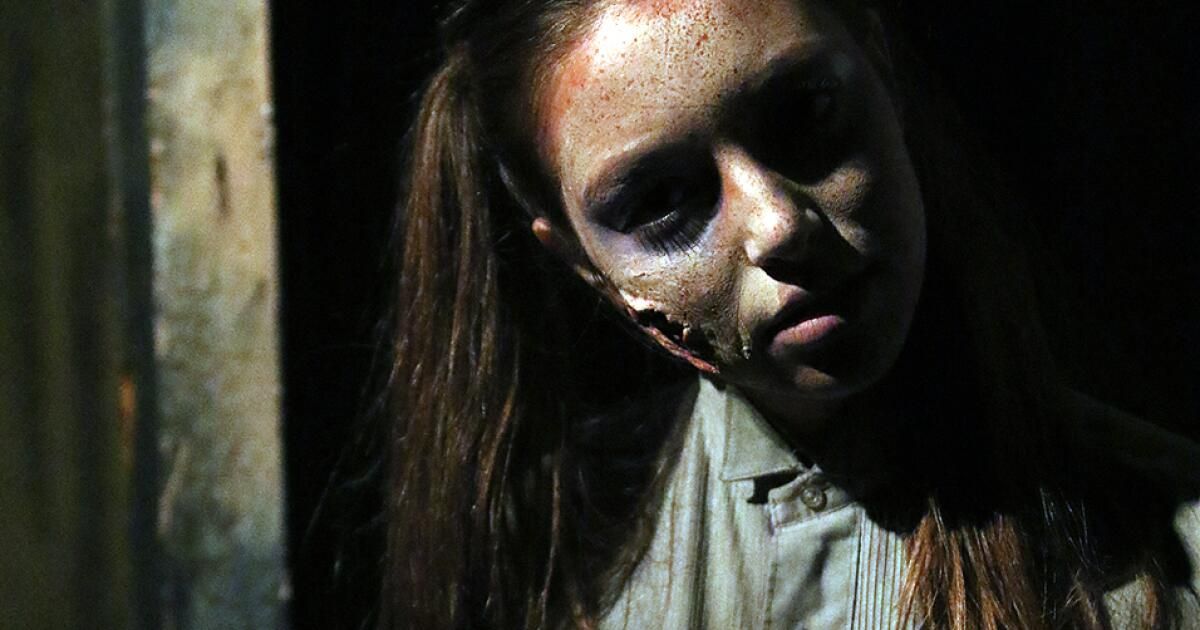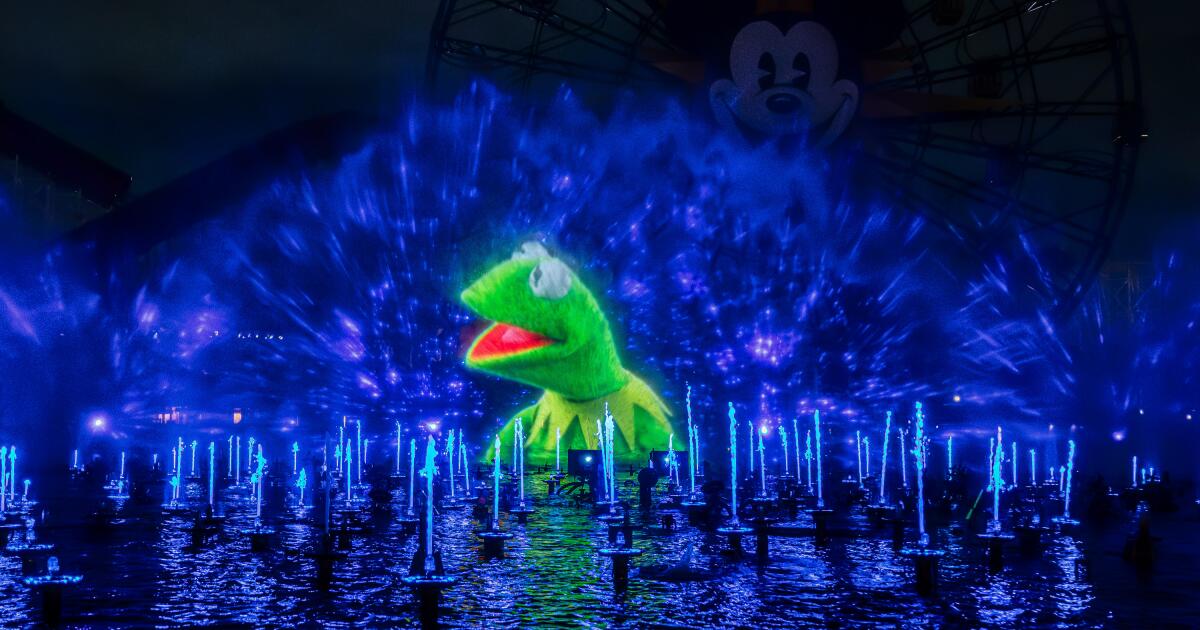Nowadays, a night at one of Southern California's most popular haunted attractions typically begins with attendees scanning digital tickets at a clearly marked entrance.
In Coffin Creek, things were a little different.
Those who made the trip to the annual Corona refuge entered an eerie scene the moment they turned off Highway 71 and headed down the desolate roads toward Riverview Recreation Park, where Coffin Creek made its home. In the parking area, the dust kicked up by the vehicles created its own layer of fog, and sounds could be heard in the darkness: faint screams, the echo of chainsaws, and the nervous chatter of attendees. There was always a sense of mystery and excitement: With its independent, grassroots vibe, Coffin Creek, one of Southern California's oldest Halloween attractions, was the little haunt that could do it.
Coffin Creek has had its last run. Its founder and operator, Gary Shireman, died last month at the age of 74. But his legend lives on in the community of Halloween enthusiasts.
Coffin Creek, located in Riverview Recreation Park, had a rustic feel, which added to the fear.
(Warren then)
While Coffin Creek, which was sometimes called Crossroads Haunted Village, was essentially a destination populated by several independently owned and operated haunted mazes, Shireman was the head of the operation. Shireman, an electrician by trade and a longtime horror fan, launched the company in 2007 after spending years searching for a location. He landed on 180 acres of a park in Corona, near the Santa Ana River. And as he soon discovered, it may already have been haunted.
The backstory of the Coffin Creek site, at least as told through a newspaper article on the site's website, is that in 1938, a massive flood hit Southern California, unearthing 13 coffins in Corona from an abandoned cemetery. Only a few of the human remains were recovered from those coffins, and soon people in the area began to see and hear strange things at night.
Local artists and volunteers worked all year to open Coffin Creek, which was never as flashy or polished a production as Universal's Halloween Horror Nights, Knott's Scary Farm or any of Southern California's well-established haunted maze destinations, but that was part of the appeal. The darkness of the forest and the muddy terrain were as effective a setting as any of the sheets or wooden floors that had been installed. While a discerning guest may have noticed that some of the haunted pieces were missing a bit of paint or weren't very well lit, the laughter heard in the dark spaces in between reminded people that this was the final thrill. You never could tell when a crazy man with a chainsaw was about to jump behind a wall.

The Coffin Creek Manor maze sign.
(Scott Feinblatt)
“Gary's mazes were very old school and very low-tech, and he was a big proponent of that,” said Warren So, a contributor to Hollywood Gothique, an online guide to all things horror in Los Angeles. “He felt that all we need is a good old-school scare. As long as people are screaming, then it's a success.”
In a 2011 interview, Shireman said he would work all year for that “first scream of the season.” Some attendees took a step through the main door and left again.
The Coffin Creek labyrinths had names such as Mausoleum Chambers, Labyrinth of Lost Hallows, Abyss Swamp, Dark Realm, and Coffin Creek Manor, the namesake of the legend. One of the most attractive aspects of the destination was that several of the mazes resided in the permanent structures that made up the Koroneburg Renaissance Festival's medieval-inspired village on the park grounds.

A scary actor ready for his next victim.
(Scott Feinblatt)
Actors played all manner of macabre creatures, including orcs and vampires. Uncle Zed's Zombie Safari, which was one of several hayride-style haunted attractions to appear over the years, even featured a community-sourced collection of monsters of sorts, all of which originated from independent contributions to the Secure, Contain, Protect (SCP) horror subgenre. Guests at this Coffin Creek attraction were transported from one broken containment stage to the next, with wandering monsters periodically surprising them in the darkness between the dimly lit vignettes.
Steve Biodrowski, owner and operator of Hollywood Gothique, said Shireman worked tirelessly behind the scenes, handling not only the creation of the shelter but also all the bureaucracy that came with operating in Corona Park. Biodrowski recalled Shireman telling him about the complex nature of his property. “There were like four different owners,” Biodrowsky explained. “One was federal, and I think it had something to do with the military; then there were state and local departments involved. Getting everyone to sign an agreement or agree to allow the haunted village to operate was nearly impossible.”

The clowns haunted the facilities and the dreams of the visitors.
(Scott Feinblatt)
Over the years of Coffin Creek's various incarnations, a number of ancillary attractions complemented the mazes: a magic show, horror merchandise vendors, and food stalls. Some of the haunts included higher production value effects: Chambers of the Mausoleum, for example, featured inventive animatronics from its main operator, Figment Foundry. Even in the mid-2010s, during the proliferation of local haunted attractions, the town shrank, but the mazes never lost their charm. By continually utilizing coverings and components from previous maze constructions, the distinctive landscaping, and the talents of passionate volunteers, Shireman continued to evoke an entertaining enterprise.
His passion for haunted attractions didn't end at Coffin Creek. In 2022, Shireman teamed up with haunt producer Jason Thompson to host the Haunt X convention at the Fairplex in Pomona. The event gave independent owners and artisans the opportunity to network, learn business techniques, and showcase their companies and products to each other and their fans.
“He wasn't just into haunted houses,” So said of Shireman. “I was always brainstorming other Halloween things that were familiar, not scary, to kids.” Additionally, So said Shireman was generous to the community. “He loved talking to you about your haunt and his and sharing ideas. I think everyone would agree that he was always willing to help. Another friend of mine was building his haunted house, and even though he had nothing to do with Gary, he was willing to help and build in the heat, in the desert. And Gary didn't profit a single cent. That's the guy he was: he doesn't ask for anything and just wants to make a friend and help create a good haunt.”

The legend of the Coffin Creek location is that a flood hit Southern California and 13 coffins were unearthed from an abandoned cemetery.
(Scott Feinblatt)
Shortly before his death, Shireman expressed enthusiasm for the future of Coffin Creek. It had announced that the venue would move to a new location at Riverside, the Lake Perris Fairgrounds, where it would operate in conjunction with the Perris Pumpkin Patch. That couldn't happen, but the Perris Pumpkin Patch has been operational this season and remains a family destination.
And while the chase may be over, as with any good maze, there may always be something else lurking ahead.












